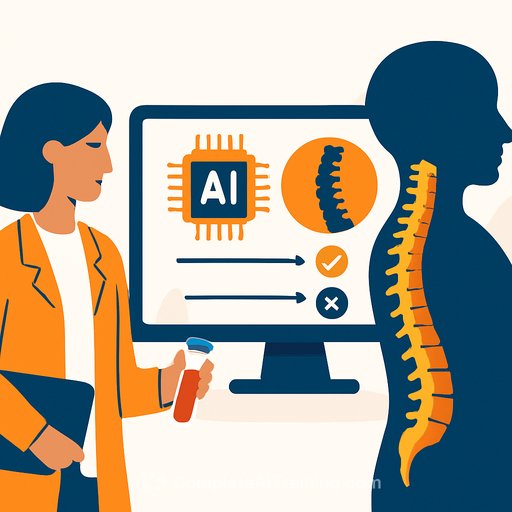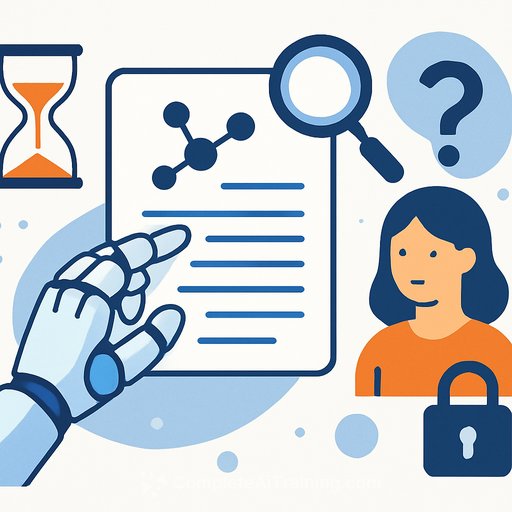AI-driven analysis of routine blood tests predicts spinal cord injury outcomes early
Early prognosis in traumatic spinal cord injury is hard, especially in emergency and intensive care settings. A new study shows that machine learning applied to routine blood tests can predict mortality risk and injury severity within days of admission, giving clinicians a clearer picture when neurological exams are unreliable.
The approach uses measurements that every hospital already collects-electrolytes, immune cells, and other common labs-making it practical and affordable. As more tests become available over the first three weeks, prediction accuracy improves.
Why this matters
Standard neurological assessments can be delayed or compromised by low responsiveness and comorbid injuries. Advanced imaging and omics biomarkers can help, but access is inconsistent and costs are high.
Routine blood tests are universal. Turning their time-series patterns into signals for severity and survival creates a pathway to earlier, better-informed clinical decisions.
What the researchers did
Researchers at the University of Waterloo analyzed hospital records from over 2,600 U.S. patients with spinal cord injury. They used machine learning to model millions of data points from blood tests collected during the first three weeks post-injury.
The focus was on detecting patterns across common lab values and how those values change over time. The models generated early predictions even when neurological exams were unavailable or inconclusive.
Key findings
- Accurate prediction of mortality and injury severity as early as 1-3 days after admission.
- Performance improved as additional lab results accrued over time.
- Signals in routine labs provided meaningful prognostic value independent of early neurological exams.
Clinical impact
Hospitals can use routine labs to generate dynamic risk scores during the critical first days. This supports triage, care planning, family communication, and trial stratification.
Because the input data are standard and low-cost, the method can scale across diverse care settings, including resource-constrained hospitals.
Implementation notes for clinical and data teams
- Data: Standardize lab codes and units; preserve timestamps to model trajectories.
- Missingness: Expect irregular sampling; use methods that handle sparse, asynchronous data.
- Calibration: Recalibrate models to local populations to maintain reliability across sites.
- Governance: Set up monitoring for drift, bias, and clinician override protocols.
- Integration: Deliver predictions within existing clinical workflows and EHR alerts.
Limitations and next steps
Results were derived from retrospective data and need prospective validation. External validation across additional health systems will test transportability.
Future work should evaluate clinical utility: do earlier, lab-driven risk signals improve outcomes, resource allocation, and trial enrollment quality? Model transparency and clear failure modes will be important for adoption.
Source and further reading
The study was published in npj Digital Medicine. For context on the journal, see npj Digital Medicine. For background on spinal cord injury, see the overview from the U.S. National Institute of Neurological Disorders and Stroke: NINDS: Spinal Cord Injury.
For research teams upskilling in clinical ML
If you are building capabilities in data analysis for healthcare AI, explore this focused path: AI Certification for Data Analysis.
Your membership also unlocks:






